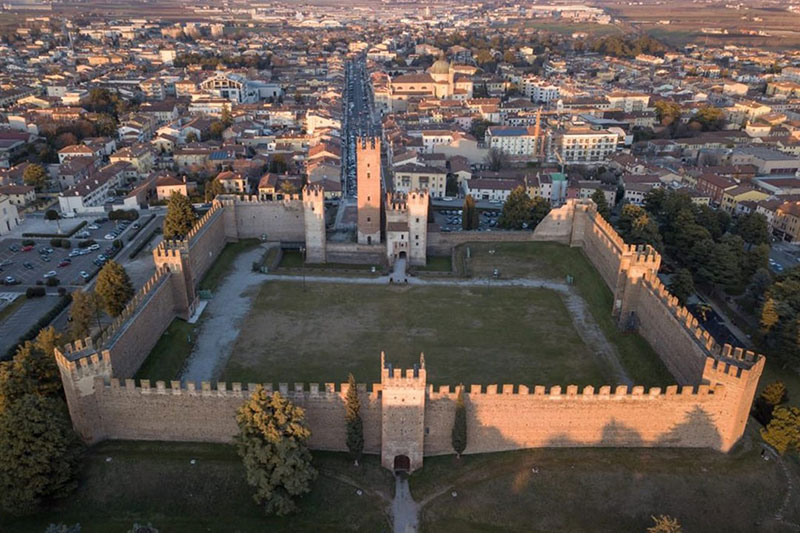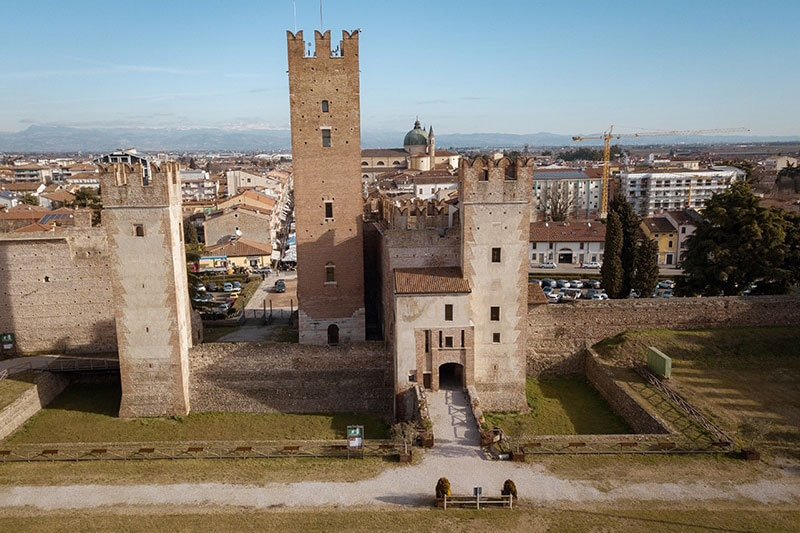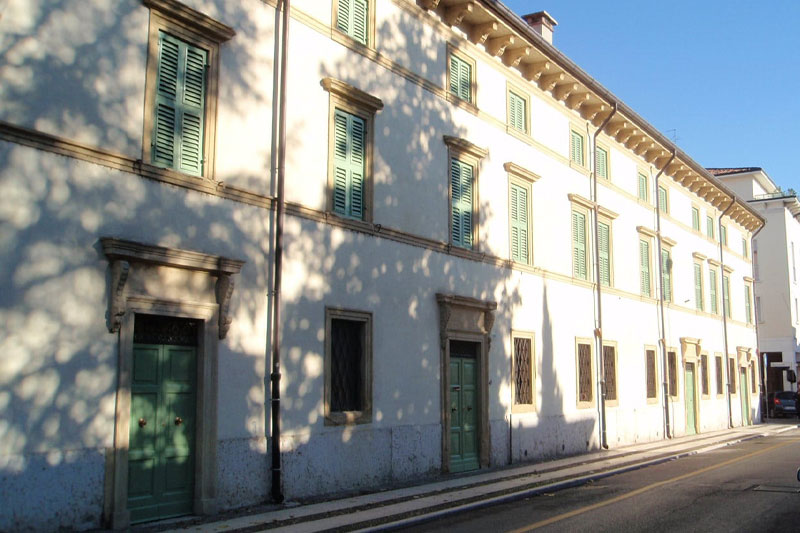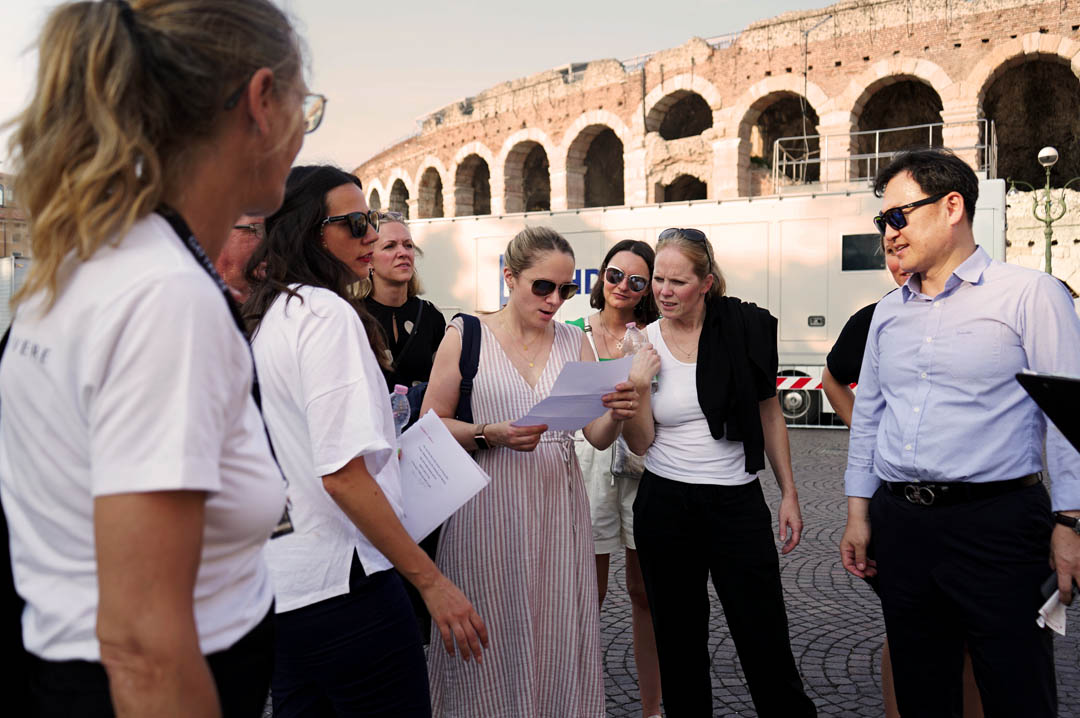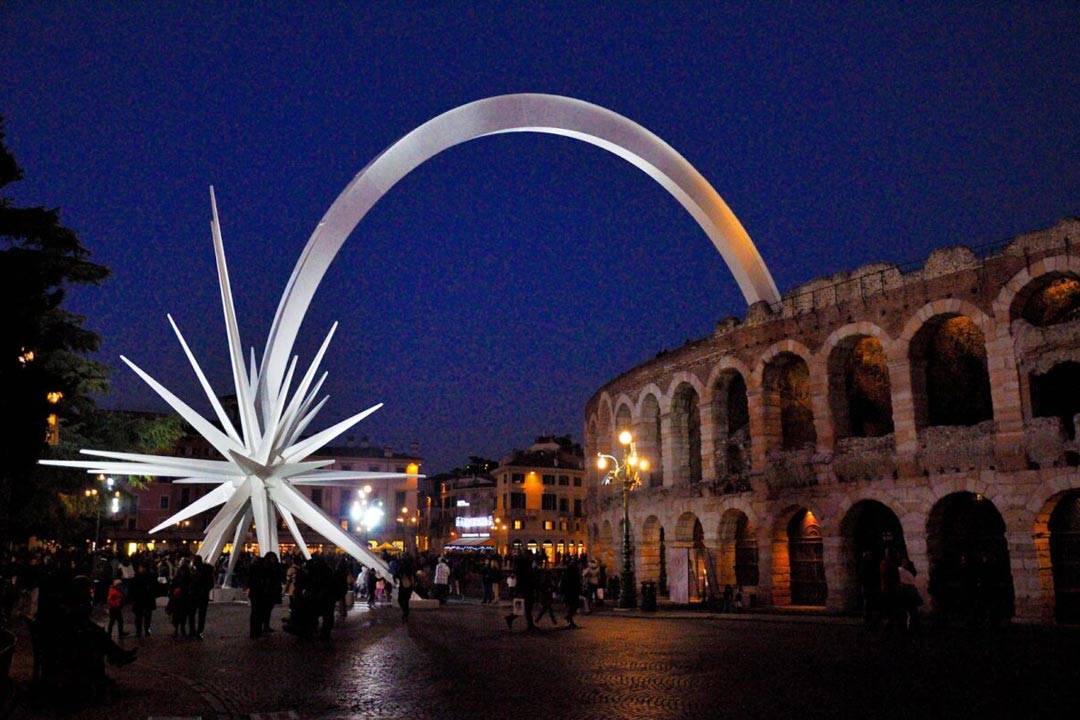Origin and history of Villafranca
Villafranca di Verona is one of the main centers in terms of size after Verona both for the number of inhabitants and for the historical and monumental value. It is about 15 km from Verona and is located in Terre del Custoza, in an intermediate position between the provincial capital Verona and the city of Mantua. To the south west is crossed by the river Tione dei Monti, which flows into the Tartarus in the territory of the municipality of Povegliano Veronese. Probably the seat of a Roman camp along the route of the ancient Via Postumia, Villafranca was officially founded in 1185 by the Council of Rectors of Verona determined to create a village to defend the southern border against Mantua and to colonize the uncultivated countryside, promoting its population thanks to the release from tax charges. The name derives from its founding feature of exemption from tax charges from which Borgus Liber, then Villa Libera and then Villafranca. The “Verona” postfix was added after the annexation of the Kingdom of Italy to distinguish it from other cities of the same name.
The municipality of Verona gave much military importance to Villafranca and here it wanted to build immediately a fortified structure which under the Scaligeri became the pivot of a defensive system which, together with the fortresses of Nogarole and Valeggio, constituted the so-called Serraglio, a great wall interspersed with towers and fortresses of which only a few traces remain today. The original function of military outpost remained unchanged throughout the first period of Venetian domination. In the early decades of the sixteenth century the city was transformed into a post office and duty collection point for the merchants and transporters that connected Verona and Mantua. On November 14, 1796, during the Italian campaign, Napoleon moved the headquarters to Villafranca and the night before the battle of Arcole he stayed in the Comini palace, now called Caffé Fantoni. During the Risorgimento period Villafranca was involved in almost all the salient phases of the time, both for its position near the Mincio and for the postal road between Mantua and Verona that passed through them. In 1848, during the First War of Independence, it was the headquarters of the Piedmontese headquarters and in 1859 it was instead the headquarters of the Austrian headquarters. Finally, we recall that on 11 July of that same year, at the Bottagisio palace, it hosted the meeting between Francesco Giuseppe and Napoleone III, who stipulated the so-called “Peace of Villafranca”, the final act of the Second War of Independence.
The armistice of Villafranca
The armistice was signed in Villafranca di Verona which ended the second Italian war of independence. An agreement that marked the beginning of that process which would then lead to the proclamation of the Regno d’Italia on March 17, 1861. This treaty was stipulated in one of the rooms of the current Bottagisio palace on the evening of July 11, 1859 and had as its protagonists the French emperor Napoleon II and the Austro-Hungarian emperor Franz Joseph. With this agreement it was established that the Habsburg empire would transfer Lombardy to France, which would only later pass it to Piedmont (the passage was definitively sanctioned by the Zurich peace conference, which ended on November 10, 1859) but would had Veneto, Trentino and Istria is preserved. The Grand Duke of Tuscany and the Duke of Modena, relatives of Francesco Giuseppe and his allies, would then return to his possessions, while as regards the Duchy of Parma, which was not mentioned in the text, there were no objections to his possible annexation to the Kingdom of Sardinia.
The decision to open negotiations with Austria for an armistice was however made by Napoleon III without warning Cavour who immediately submitted his resignation to rein as he considered that agreement a betrayal by France with respect to the commitments made. Behind that agreement was also hidden the disappointment of all those Venetians and those from Mantua forced to remain subjects of the emperor and to deal with the revenge of the Austrians, in addition to the anger and disappointment of many patriots for an unwanted end to the war, a war in which the people had strongly believed.
